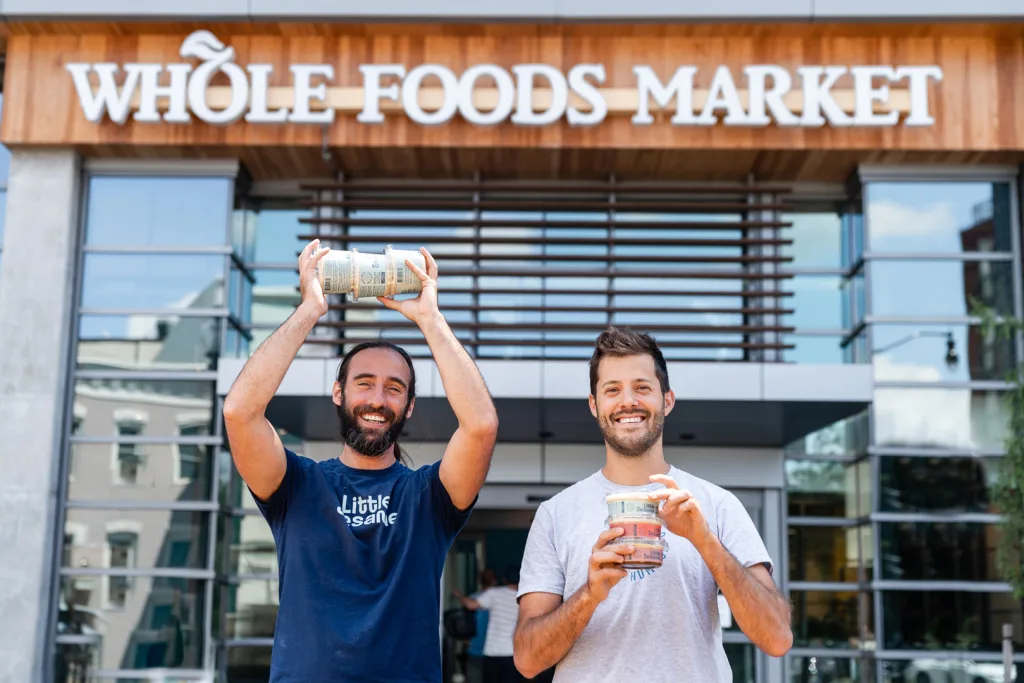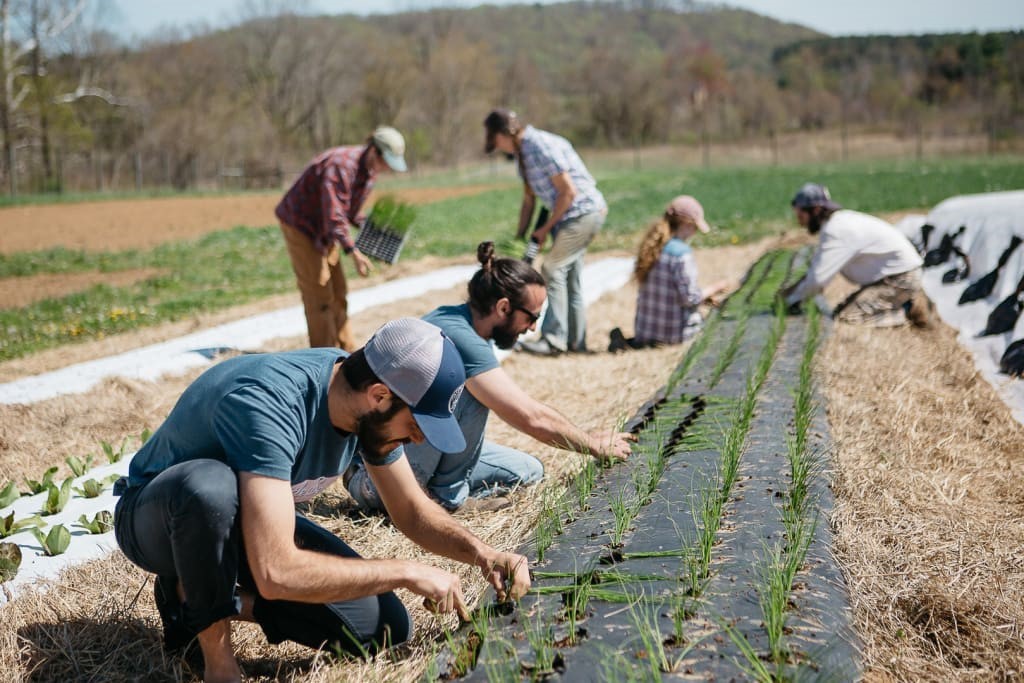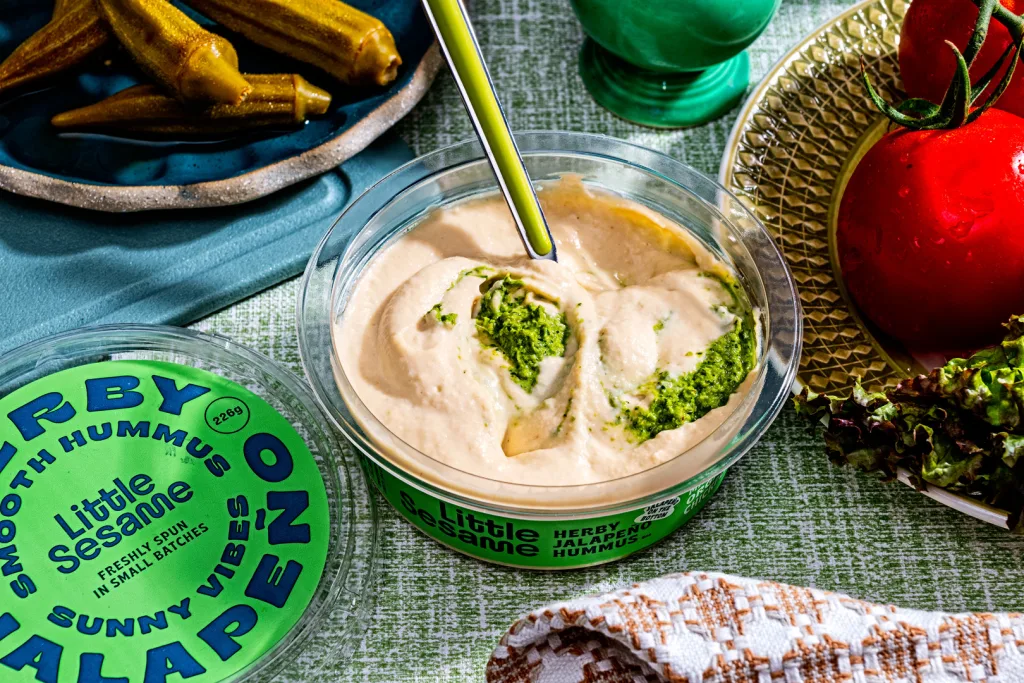The USDA has a plan to help organic farmers. It starts with hummus
The USDA has a plan to help organic farmers. It starts with hummus
A new initiative from the Biden administration is helping organic farmers by stoking demand for their products.
As a young brand, Little Sesame has spent the past few years doing what most startups do: looking for capital.
The three-year-old Washington, D.C.-based consumer packaged goods company, which spins fresh hummus from organic chickpeas and counts Whole Foods as an investor, raised $3 million early this year from venture groups. Then, in late March, something unexpected happened.
The United States Department of Agriculture emailed. It was awarding Little Sesame $2.2 million to develop its business and further support organic chickpea farmers.

Wiseman was in Los Angeles attending Expo West (the largest CPG trade show) when he found out. “I ran through my brother’s apartment screaming. We’ve spent years making a case and building this supply chain, so it felt so rewarding to finally be acknowledged for sourcing this way and supporting good agriculture.”
With the grant, Wiseman plans to expand Little Sesame’s production capacity and boost sales and marketing efforts, with an eye toward quadrupling volume over the next three years. That increased volume is what the USDA is counting on; it would create an unprecedented market for organic chickpeas—which, like alfalfa, lentils, and peas—are little climate change warriors that fix nitrogen in the soil and can easily be rotated with wheat in the field. Over the three-year term of the grant, Wiseman will purchase millions of dollars of chickpeas from Little Sesame’s network of farmers in the nation’s bread basket.

A new direction for the USDA
The funding, part of a new $75 million Organic Market Development Grant from the USDA’s Department of Agricultural Marketing Services (AMS), represents a burgeoning effort from the U.S. government to create more robust markets for organic crops. To date, the USDA’s AMS has awarded $50 million to 70 projects in 29 states, and it plans to announce the next batch of awards in the coming months. This is the first time that the government has invested this much capital into so many organic food businesses.
These grants are a small part of the Biden Administration’s mission to transform the country’s food system, a slice of a big picture policy platform that grew out of the pandemic to address supply chain vulnerabilities. “This is a new program for us,” says Jenny Lester Moffitt, the USDA’s undersecretary for marketing and regulatory programs, though it’s still just a fraction of the billions the USDA spends on commodity farming. “We were interested in building domestic markets for organic crops like chickpeas and other legumes, rotational crops, and dairy,” reducing reliance on imports.
“What’s exciting is that of the projects we funded, 70% are small businesses, which is not by accident,” she continues. (Other CPG startups that benefitted are Zego Oats, Snacktivist Foods, 12 Tides, Lundberg Farms, and Gruff/Cream of the West.) “We encouraged small businesses and farms that have traditionally not worked with the USDA to apply. We haven’t had a program like this before.”

A Win for Regenerative Farmers
Little Sesame won the grant because of its vertically integrated supply chain; not only does the company manufacture its hummus, but it essentially has its own farmer. Every one of Little Sesame’s chickpeas is sourced directly from Casey Bailey, a fourth generation regenerative organic farmer who works 5,000 acres under the big sky in Fort Benton, Montana.
Wiseman met Bailey when he and cofounder Ronen Tenne first started tinkering with hummus recipes in 2016. They’d order 50 pound bags of chickpeas at a time, which Bailey would grow exclusively for Little Sesame on 500 acres of his farmland. During the USDA grant’s term, Little Sesame estimates that it will purchase more than a million pounds per year from Bailey and his fellow farmers in the Montana Organic Producers Coop; to keep up with Little Sesame’s increased demand, Bailey estimates he will be increasing his chickpea acreage from 500 to 2000.
“Without this grant creating a market, I would just stop growing chickpeas,” Bailey says. And without chickpeas, Bailey cannot grow wheat in rotation. “Wheat without rotation is the kind of soil-damaging monoculture that we are trying to get away from,” he explains. “To have wheat we need chickpeas. To have both we need a healthy diversified supply chain. This grant shows the potential of public investment to develop organic food for consumers. It is the first time I have felt like a big wonky grant is really kicking.”

A New Source of Capital
Wiseman says that government funding like the kind Little Sesame received can be game-changing for startups in today’s high interest-rate environment. “It’s not like it used to be, with equity flowing in freely.”
The USDA knows this. That’s why it is opening 11 regional centers (and one tribal center) across the country to help small businesses learn how to apply for these grants.
“If government dollars are here to support us, it accelerates what is possible,” Wiseman says. “It gives us real fire power.” Plus, he says, “it’s the best money out there, because it doesn’t come with investors or an interest rate. The USDA is visionary here.”
ABOUT THE AUTHOR
Fast Company
(18)



